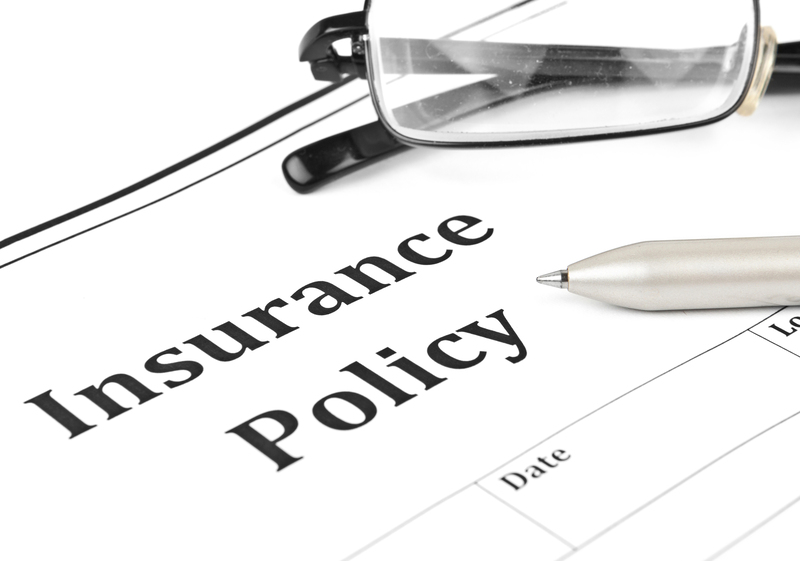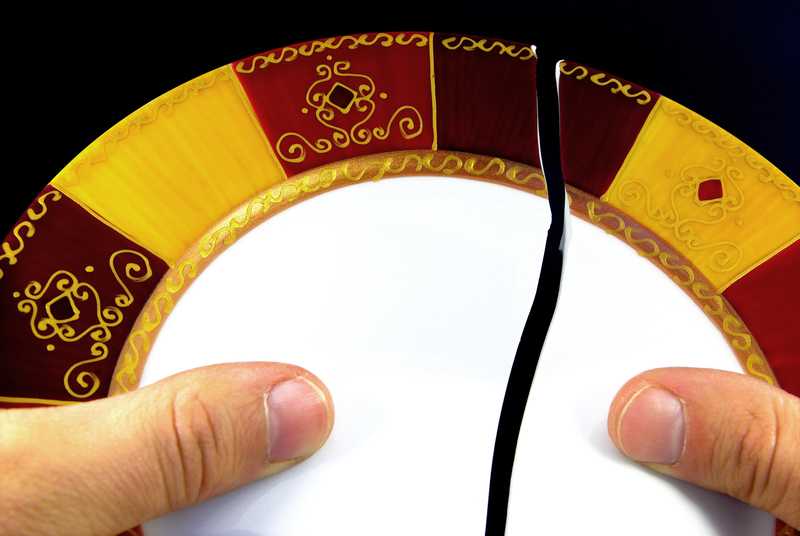Professional vs DIY Piano Moving: A Detailed Analysis
Posted on 02/06/2025
Professional vs DIY Piano Moving: A Detailed Analysis
Relocating a piano is not an everyday task. Whether moving to a new home, rearranging furniture, or gifting your cherished instrument, you might wonder: Should you hire professional piano movers or go the DIY route? In this detailed analysis of professional vs DIY piano moving, we'll explore the crucial differences, risks, benefits, cost implications, safety considerations, and top recommendations to help you make an informed decision.

Understanding the Challenges of Piano Moving
Pianos are not only valuable but also incredibly delicate and complex. Moving one incorrectly can lead to costly damage or even personal injury. Before you decide between hiring piano movers or doing it yourself, consider the major challenges involved:
- Weight and Size: Upright pianos weigh between 300-500 lbs, while grand pianos can exceed 1,000 lbs.
- Fragility: The internal mechanics, keys, strings, and the polished wood can be easily damaged.
- Awkward Shape: Pianos have an uneven distribution of weight, making them difficult to grip and maneuver.
- Navigational Obstacles: Stairs, doorways, and narrow hallways present added risks.
- Climate Considerations: Temperature and humidity changes during transport can impact tuning and integrity.
Professional Piano Moving: What Does It Entail?
What Services Do Professional Piano Movers Offer?
Professional piano moving companies specialize in safely relocating all types of pianos--upright, spinet, baby grand, and concert grand. Their services typically include:
- Pre-move Assessment: Evaluating the piano's size, type, and moving obstacles.
- Protective Packing: Use of pads, covers, and shrink wrap to shield the instrument.
- Specialized Equipment: Skid boards, piano dollies, ramps, moving straps, and sometimes cranes.
- Expert Handling: Moving in/out of intricate spaces with precise techniques to prevent damage.
- Transport: Climate-controlled vehicles designed for instruments.
- Insurance Coverage: Protection against accidental damage or loss.
- Re-assembly & Placement: Setting up the piano in its new location and initial tuning advice.
Advantages of Hiring Professional Piano Movers
Opting for professional piano relocation brings peace of mind and several tangible benefits:
- Specialized Expertise: Professionals have years of experience and training.
- Reduced Risk: Minimized risk of damage to the piano, property, and personal injury.
- Efficiency: Quick and organized process, saving you time and stress.
- Proper Equipment: Access to all necessary tools and materials that most homeowners lack.
- Insurance: Financial protection in case of mishaps, which is especially vital for high-value instruments.
- Stress-free Experience: Professionals handle the logistics so you don't have to.
Potential Downsides of Professional Piano Moving
- Cost: Professional services often require a significant investment, depending on move complexity.
- Scheduling: Availability may be limited, requiring advance booking.
- Less Control: Some owners prefer hands-on involvement, which is less feasible with hired movers.
DIY Piano Moving: What You Need to Know
The DIY Piano Moving Process
Do-it-yourself piano moving may seem like a way to save money, but it's a highly demanding endeavor requiring thorough preparation. Here are the typical steps:
- Recruiting strong helpers (recommended: at least 3-4 people).
- Measuring all spaces the piano must pass through.
- Assembling basic moving supplies--dollies, straps, blankets, ramps.
- Protecting the piano's body and keys with padding and tape.
- Strategically lifting and maneuvering the instrument, taking care not to strain yourself or damage property.
- Transporting in a truck/van, pad-wrapped and secured against movement.
- Careful unloading and placement at the destination.
Pros of DIY Piano Moving
- Cost Savings: No labor fees--just materials, equipment rental, and transportation.
- Immediate Flexibility: Move on your own schedule, without waiting for pro availability.
- Personal Oversight: Direct involvement in the move for those who prefer a hands-on approach.
Cons and Risks of DIY Piano Moving
DIY piano relocation is fraught with hazards and hidden costs:
- Risk of Injury: Heavy lifting can cause serious back injuries, muscle strains, or worse.
- Damage to Piano: Inadequate padding, improper technique, or dropping can result in cracked casings, broken keys, warping, or internal damage.
- Home Damage: Scraped walls, dented floors, and broken thresholds are common DIY mishaps.
- Lack of Insurance: Any damages are your financial responsibility.
- Time Consuming: Preparation, execution, and troubleshooting take longer than anticipated.
- Equipment Rental Costs: Renting necessary gear can add up.
Comparing Professional vs DIY Piano Moving: A Point-by-Point Breakdown
| Factor | Professional Piano Movers | DIY Piano Moving |
|---|---|---|
| Expertise | Extensive training, experience with various piano types and obstacles | Limited unless you have prior experience |
| Equipment | Professional-grade specialized equipment | Often basic or rented; risk of inadequate supplies |
| Safety | Much lower risk for injury or instrument damage | Significant potential for harm or costly accidents |
| Time & Stress | Fast, efficient, and stress-free | Potentially slow, difficult, and frustrating |
| Cost | Higher upfront, but may save money on avoided repairs/damages | Lower upfront but risk of unexpected costs |
| Insurance | Usually included, covering damages or losses | No insurance--personal liability for all losses |
The True Costs: Professional vs DIY Piano Moving
While DIY might seem cheaper, let's evaluate the full scope of expenditures in both scenarios:
Professional Piano Moving Costs
- Basic Local Moves: Typically range from $200 to $600 depending on type and difficulty.
- Long Distance or Specialty Moves: $600-$2,000+ based on distance, stairs, and special handling.
- Insurance and Setup: Often included in higher-end packages.
DIY Piano Moving Costs
- Truck Rental: $50-$200 (with loading ramp).
- Dolly/Strap/Pad Rental: $40-$100 for a day's use.
- Helpers: Free (friends/family) or $20-$30/hour each for hired moving labor.
- Incidental Costs: Repair to property or piano if things go wrong, which can escalate into the thousands.
On paper, DIY piano moving appears budget-friendly, but when you factor in equipment, possible repairs, and your own time, the savings can rapidly diminish.
When Does DIY Make Sense?
DIY piano moving might be an option if:
- You're moving a small, lightweight spinet or console (under 300 lbs).
- Your destination is ground-floor to ground-floor, with no stairs or tight turns.
- You have adequate manpower and experience in moving heavy objects safely.
- You possess (or can rent) the necessary equipment without straining your wallet or resources.
- Insurance value on the piano is modest, and you accept all risks.
If you're unsure, it's usually safer and ultimately more cost-effective to hire a professional piano moving service. Especially for grand, baby grand, antique, or sentimental pianos, expert handling is highly recommended.
How to Choose a Reputable Piano Mover
If you decide to hire experts, here are top tips to ensure your cherished instrument is in safe hands:
- Check Credentials: Look for business licenses, insurance, and endorsements from music institutions.
- Verify Experience: Prioritize companies specializing in piano moving, not just general movers.
- Read Reviews: User feedback on platforms like Google, Yelp, or BBB can reveal reliability and professionalism.
- Get Written Estimates: Ensure all fees, insurance, and services are detailed in the contract.
- Discuss Insurance Coverage: Insist on proof of proper insurance and clarify coverage terms.
After the Move: Caring for Your Piano
- Allow the piano to acclimate to its new room's temperature and humidity for at least 24 hours.
- Schedule a professional tuning. Moving can impact the tension of strings.
- Inspect for any new scratches, dents, or functionality issues and address them promptly.
- Position the piano away from vents, windows, or direct sunlight to prevent wood warping.
Frequently Asked Questions on Professional and DIY Piano Moves
- Is it ever safe to move a grand piano on my own?
Only in rare, simple circumstances. Grand pianos are heavy, awkward, and prone to damage. Professional moving is strongly advised. - Are there insurance options for DIY piano moves?
Most rental companies offer limited coverage for trucks/equipment but not for pianos themselves. Consult your homeowner's insurance for possible (but rare) coverage. - How long does professional piano moving take?
Typically, 1-3 hours for a local move, more if complex or long-distance. - Can all movers handle pianos?
No. Only specialized piano moving companies with trained staff and dedicated equipment should move pianos safely.

Conclusion: Weighing Professional vs DIY Piano Relocation
Moving a piano is a high-stakes operation. While DIY piano moving can appear cost-effective for the smallest, simplest moves, the risks of serious injury and potentially irreversible damage are significant. Professional piano moving provides peace of mind, protection, efficiency, and expertise worth the investment--especially for treasured instruments or complicated moves.
Ultimately, the right choice depends on your piano's size, value, move complexity, and your personal experience. When in doubt, trust the professionals to ensure your piano arrives safely, ready for a lifetime of music in its new home.



